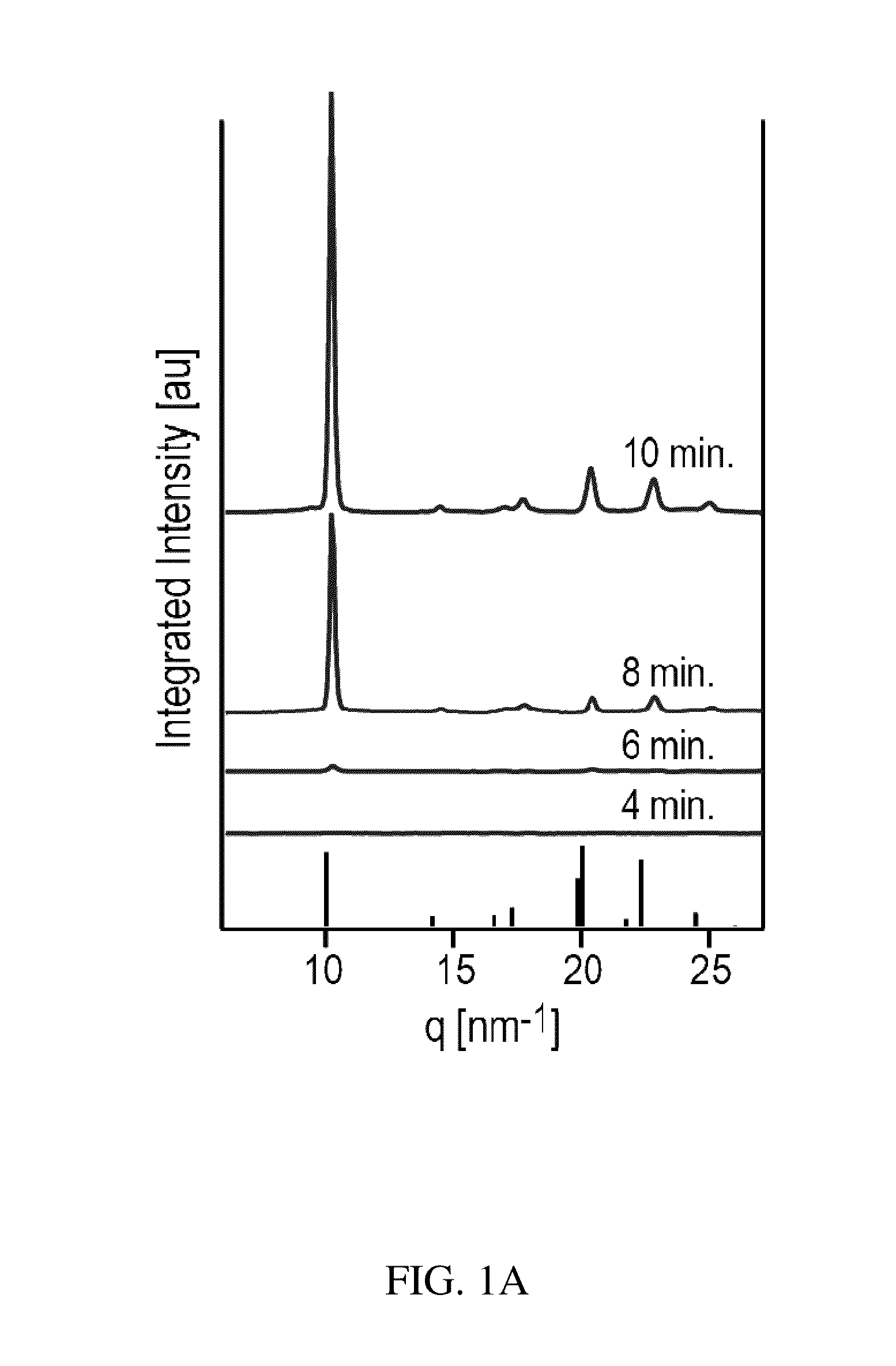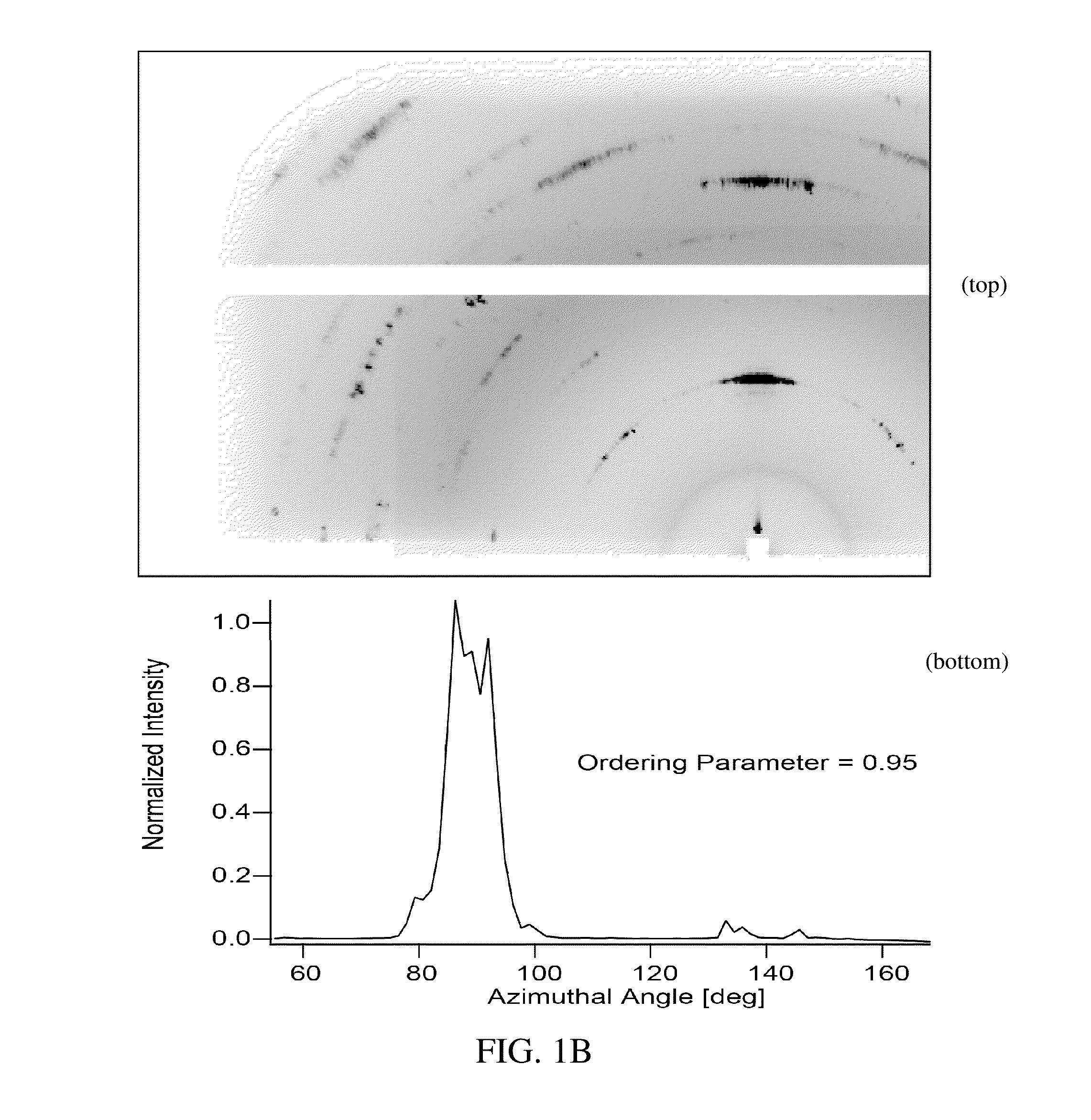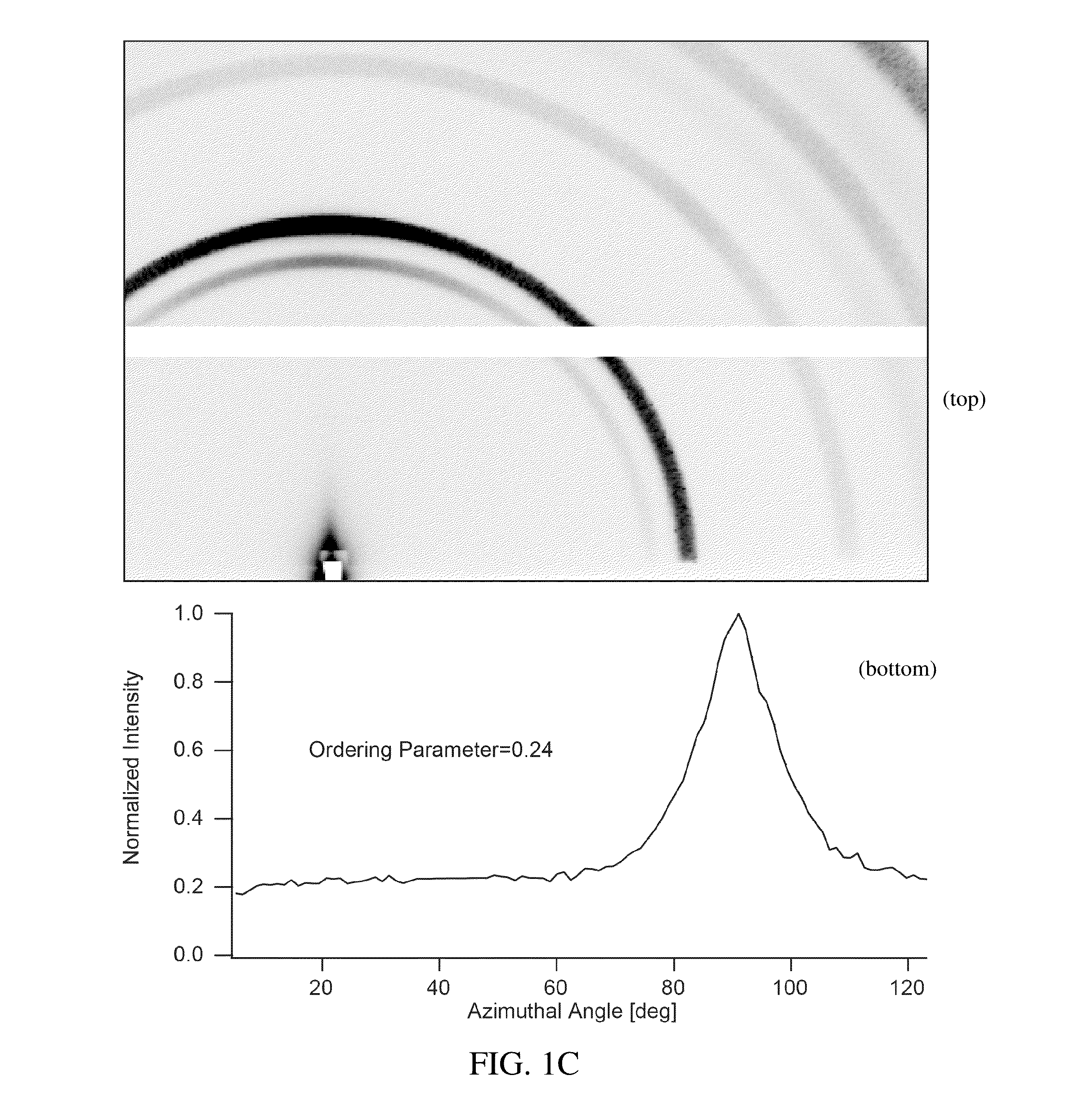Crystalline organic-inorganic halide perovskite thin films and methods of preparation
a technology of organic inorganic halide and perovskite, which is applied in the direction of organic chemistry, liquid/solution decomposition chemical coating, chemical production, etc., can solve the problems of significant limitations in the effort to achieve high-quality crystalline films, non-optimal or poor device performance, and substantial imperfections in the final perovskite film, etc., to achieve no longer limited processing time, low vapor pressure, and the effect of improving the quality of the final film
- Summary
- Abstract
- Description
- Claims
- Application Information
AI Technical Summary
Benefits of technology
Problems solved by technology
Method used
Image
Examples
examples
Preparation of a Thin Film of (CH3NH3)PbI3 Perovskite from Methylammonium Formate (CH3NH3+HCOO−) Ionic Liquid
[0046]Methylammonium Formate (CH3NH3+HCOO−) Synthesis
[0047]To synthesize methylammonium formate ionic liquid, 25 mL of methylamine at 33% in ethanol and 10 mL absolute ethanol were added to a round bottom flask in an ice bath and placed under nitrogen flow on a Schlenk line. 6 mL of 88% formic acid was mixed with 25 mL of methanol and loaded into a 60 mL syringe. The formic acid solution was added dropwise to the methylamine solution using a syringe pump at a rate of 2-3 drops per second through a septum to maintain the seal in the round bottom flask. The reaction solution was stirred slowly during the addition of the formic acid solution. After the complete addition of the formic acid, the solution was stirred for an additional 1 hour, then the flask was placed under mild vacuum (˜100 mTorr) for 24 hours. During the vacuum period, the ice bath was replenished periodically to...
PUM
| Property | Measurement | Unit |
|---|---|---|
| grain size | aaaaa | aaaaa |
| grain size | aaaaa | aaaaa |
| grain size | aaaaa | aaaaa |
Abstract
Description
Claims
Application Information
 Login to View More
Login to View More - R&D
- Intellectual Property
- Life Sciences
- Materials
- Tech Scout
- Unparalleled Data Quality
- Higher Quality Content
- 60% Fewer Hallucinations
Browse by: Latest US Patents, China's latest patents, Technical Efficacy Thesaurus, Application Domain, Technology Topic, Popular Technical Reports.
© 2025 PatSnap. All rights reserved.Legal|Privacy policy|Modern Slavery Act Transparency Statement|Sitemap|About US| Contact US: help@patsnap.com



